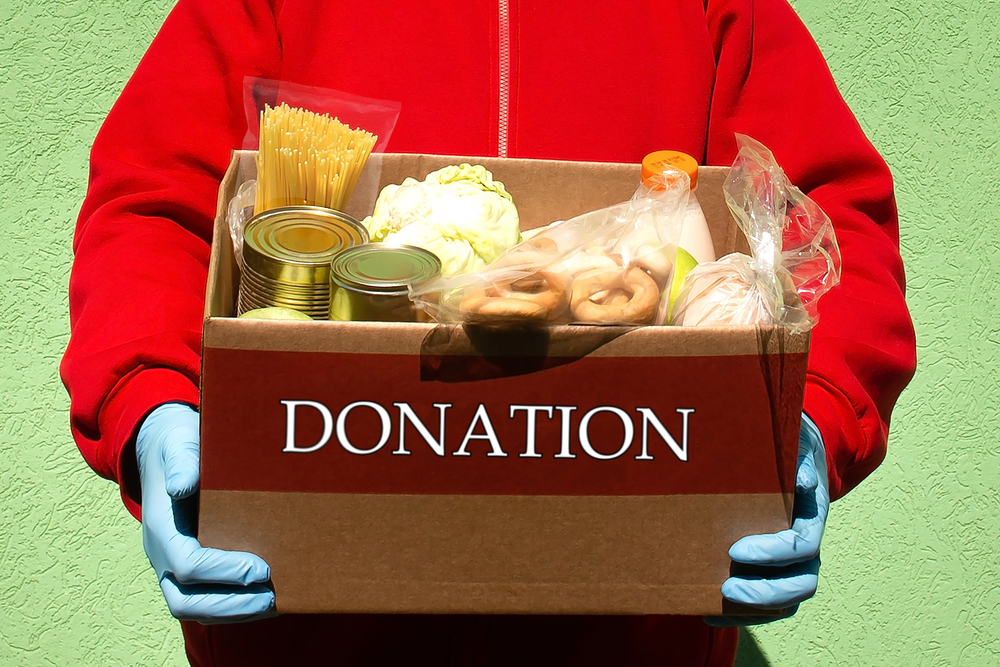
Sticker shock at the checkout counter is not a fleeting moment grocery costs have increased 24% since 2020, and for many Americans, that translates to each shopping trip to the supermarket feeling like an economic punch to the gut. With food inflation surging ahead of wage increases and staples such as eggs and milk doubling in cost, no wonder families feel pinched from all directions.

But here’s the better news: No one can, alone, prevent inflation, but there are smart, expert-approved means of making your food dollars go farther without losing flavor or nutrition. From savvy meal planning to squeezing every advantage from loyalty programs, these practical strategies can assist you in shopping smarter, saving more, and even finding new ways to nourish your family on a budget no matter what the economy does to you.

1. Learn to Plan Meals and Maintain Inventory
Meal planning is not a fad it’s a superpower for the wallet. Experts such as Thomas Gremillion of the Consumer Federation of America state that planning meals ahead saves money by preventing impulse purchases and reducing food waste. Begin by checking the contents of your pantry and fridge first to see what you already have. Sarah Schweisthal, budgeting expert at YNAB, suggests taking a complete inventory so that you don’t inadvertently double up on essentials.
Once you see what you have, write down a week’s worth of meals and construct your shopping list around common ingredients. This little trick not only cuts your bill in half but makes weeknight suppers a cinch. For tech enthusiasts, a program such as AnyList or Mealime can keep your plan (and budget) in line. And if you’re tempted by impulse snacks, leave some budget for surprise treats being flexible actually keeps you on track, says Schweisthal.

2. Load Discounts, Coupons, and Loyalty Rewards Like a Pro
Paper clipping coupons is so old-fashioned today’s bargains are just a click away. Kiersten Torok, aka Torok Coupon Hunter, is a firm believer in digital coupons on store apps: “You just have to scan a product in a store, the coupons appear on your app and then they apply automatically in the checkout.” Apps such as Flipp and Ibotta do it even easier, allowing you to look through offers and get cashback with minimal effort.
Don’t forget to join your favorite store’s loyalty program many are free and offer exclusive discounts, early access to sales, and even birthday perks. According to Experian, programs like Target Circle offer 1% cash back, while Target RedCard users get 5%. Just remember: always compare prices, even with member discounts, and avoid overspending just to rack up points. For the ultimate savings, stack store sales, manufacturer coupons, and loyalty rewards whenever possible.

3. Adopt Store Brands and Bulk Purchases
Store-brand switching is a money-saving shopper’s best-kept secret. Store-brand products, a 2022 Consumer Reports blind test found, can cost 5% to 72% less per serving than name brands and three-quarters of them are just as tasty. No surprise that 56% of shoppers are making the switch.
Buying in bulk is another game-changer, especially for families. Wholesale clubs like Costco and Sam’s Club offer significant savings on pantry staples, and teaming up with a friend or neighbor to split large packages can make bulk buying even more affordable. Don’t forget to check out food-sharing apps like Olio or Too Good to Go for deals on surplus groceries in your area.

4. Shop Where and How You Think Again
Where you shop may make a big difference. Increasingly, more Americans are looking to discount stores such as Dollar Tree and Dollar General, where staples are usually cheaper than at conventional supermarkets. Credit Karma says that 35% of consumers now value discount stores, while 22% hunt promotions wherever they can find them.
Online shopping and curbside pickup also keep you on your list and away from those enticing endcap sales. Kiersten Torok suggests price-checking at several stores before making your purchase sometimes, dividing your shopping list between stores gets you the best value.

5. Leverage Government and Community Assistance
For those families feeling the squeeze, initiatives such as SNAP (Supplemental Nutrition Assistance Program) and local pantries are a lifeline. SNAP benefits are calculated to keep pace with the cost of food, offering a lifeline for more than 42 million Americans. SNAP is the country’s first line of defense against hunger, as grocery prices continue to rise, as stated by the Food Research & Action Center.
Don’t forget about local pantries and food banks, which are usually easier to access than federal assistance and can fill gaps in lean months. Sites such as 211.org and feedingamerica.org can direct you to local resources. As Rachel Sabella of No Kid Hungry New York explains, “The increasing price of groceries isn’t just putting a squeeze on family budgets it’s forcing families further into debt. This should be a wake-up call to policymakers.”

6. Steer Clear of Debt Traps and Keep Your Financial Wellbeing Intact
As the cost of food goes up, more households are reaching for credit cards, buy now pay later (BNPL) loans, and even payday loans to pay for groceries. But be careful: having a balance on high-interest cards (average rates reached 22.8% in 2023) or not paying back BNPL in time can soon become long-term debt.
Experts caution that dipping into savings intended for emergencies, or turning to costly payday loans, can destroy your financial cushion. Instead, aim to squeeze every possible resource, budget everything diligently, and turn to community or government assistance before turning to debt. Preserving your finances is no less vital than having dinner on the table.

7. Engage the Entire Family in Budgeting
Grocery savings are most effective when the whole family is in on it. Engaging children in scanning coupons or price checks makes shopping a collaborative effort and teaches long-term money habits. When you’re purchasing in bulk, team up with friends or relatives to share expenses and limit waste. Olio apps even allow you to swap excess groceries with neighbors, fostering community along with saving money.

Grocery inflation won’t disappear overnight, but by combining shrewd planning, online resources, and neighborhood help, families can manage their food budgets without cutting back on quality or nutrition. These techniques don’t merely save money they empower you to take charge, cut stress, and squeeze the most value out of every dollar spent at the grocery line. Being flexible, well-informed, and proactive is the best recipe for beating higher food prices.


